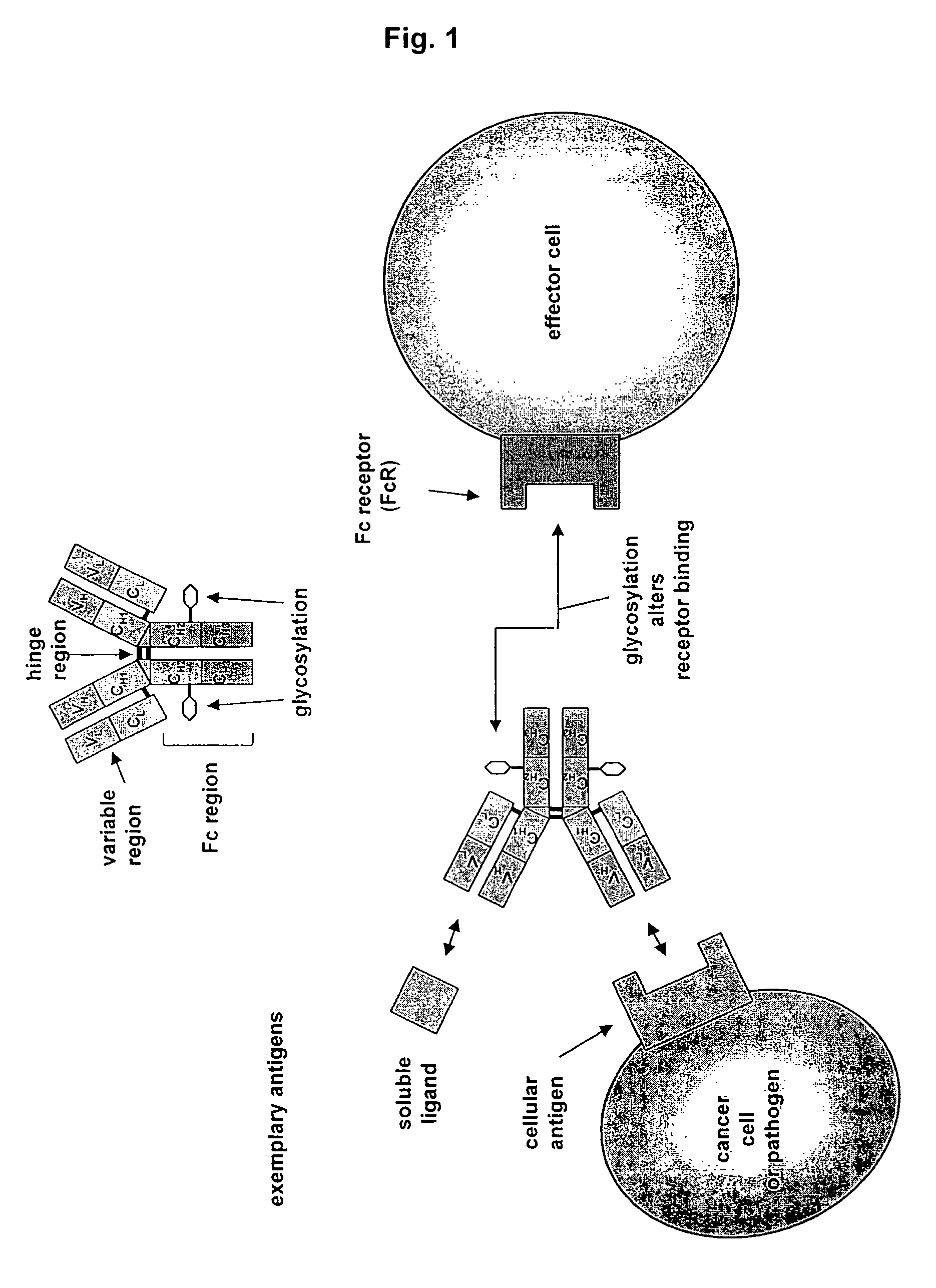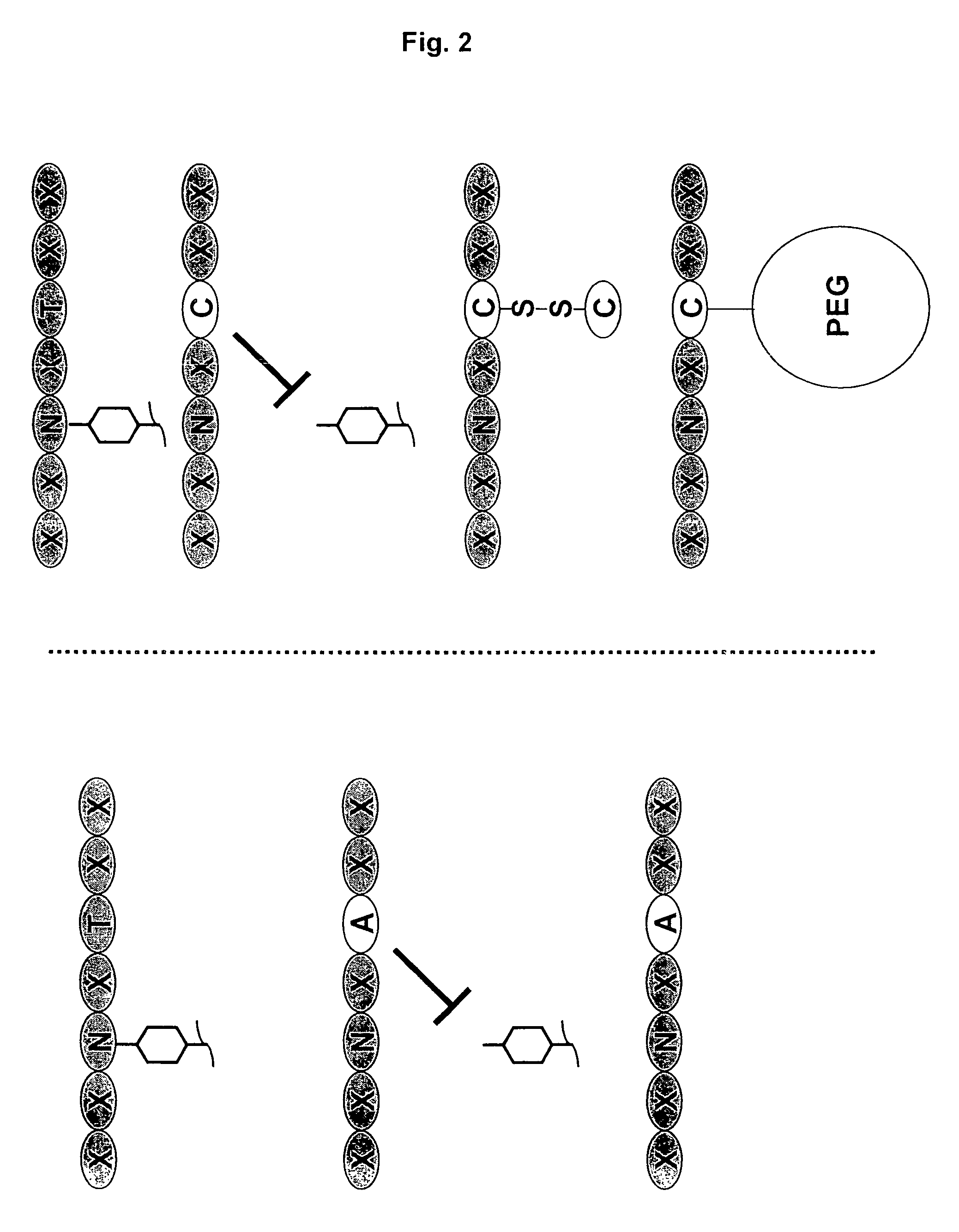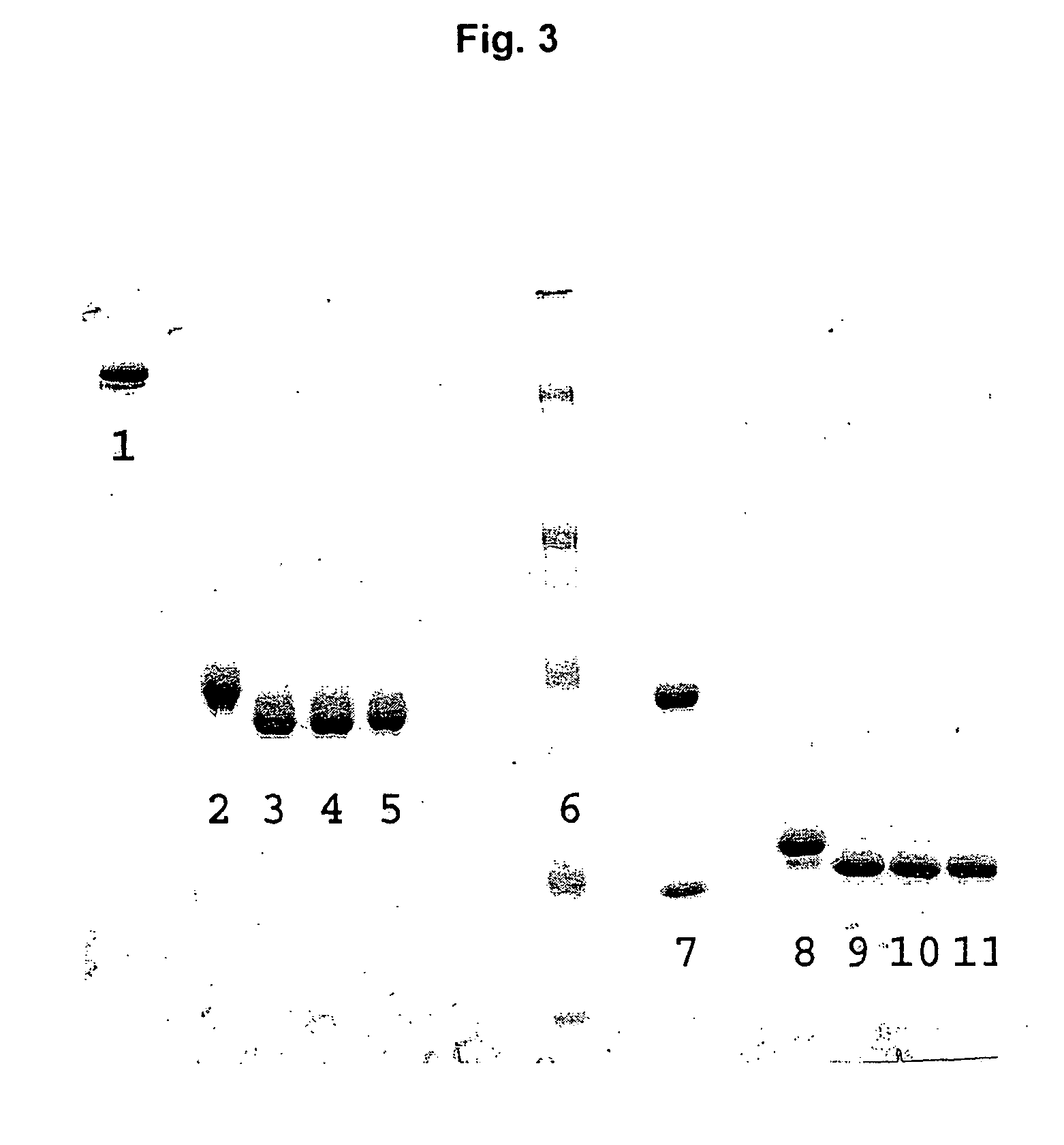Antibodies having altered effector function and methods for making the same
a technology of effector function and antibody, which is applied in the field of antibodies having altered effector function and methods for making the same, can solve the problems of reducing fragments' half-life, difficult purification, and provoking unwanted side effects, so as to reduce binding, reduce effector function, and reduce effector function
- Summary
- Abstract
- Description
- Claims
- Application Information
AI Technical Summary
Benefits of technology
Problems solved by technology
Method used
Image
Examples
example 1
Methods for Producing and Characterizing Aglycosylated Antibodies
[0196]The following example describes the production of an aglycosylated antibody in a eukaryotic cell and the characterization of the resultant antibody.
[0197]Nucleic acids encoding a model human antibody (hu5c8) of the IgG1 subtype having binding affinity for the CD154 ligand were genetically engineered to have one of several alterations. The first alteration comprised a codon encoding in place of the wild type amino acid residue, i.e., threonine, at position 299, an alanine (T299A). In another alteration, the codon encoding threonine at position 299 was changed to encode a cysteine (T299A). A control alteration was also included, in which the specific asparagine that is glycosylated is mutated (N297Q) (FIGS. 3, 5-7). In addition, the T299A mutation was introduced into a model human antibody hu5C8 of the IgG4 subtype. The IgG4 sequence had a further modification in the hinge peptide (S228P) to stabilize the interchai...
example 2
Methods for Producing an Aglycosylated Antibody with Reduced Effector Function Using Amino Acid Substitutions of Sufficient Steric Bulk and / or Charge
[0201]The following example describes the production of an aglycosylated antibody by altering an antibody at a first amino acid residue with a residue that has sufficient steric bulk and / or charge as to inhibit glycosylation.
[0202]Nucleic acids encoding a candidate antibody, for example, an antibody of the IgG1 or IgG4 subtype, were genetically engineered to have one of several alterations predicted to inhibit glycosylation and / or effector function. While not wishing to be bound by theory, results obtained above for a cysteine adduct support the rationale that a sufficiently bulky and / or charged residue will inhibit a glycosidase from glycosylating an Fc-containing polypeptide and reduce undesired effector function. For example, a substitution at the Kabat position of 299 (e.g., T299) with a bulky or charged residue is predicted to inhi...
example 3
Methods for Pegylating Aglycosylated Antibodies
[0205]The following example describes the production of an aglycosylated antibody in a eukaryotic cell and the pegylation of the resultant antibody.
[0206]In particular, the T299C antibody variant was determined to be specifically modified with Peg-maleimide under non-denaturing conditions by first reducing the protein with TCEP to remove the cysteine adduct, allowing the hinge disulfides to reform by dialyzing the protein over several days, and reacting with PEG-maleimide. The T299A antibody variant could not be modified with PEG under these conditions (FIG. 6).
[0207]Briefly, to reduce the test proteins, 200 μL of the 0.94 mg / mL T299A and T299C Fc antibody variant preparations were treated with 4 μL of 500 mM EDTA, pH 8 (final concentration 10 mM) and 10 μL of 100 mM TCEP (final concentration 5 mM) for 3 hours at room temperature. The reduced proteins were dialyzed against PBS over four days with five changes at 1:1000 volume ratios. Al...
PUM
| Property | Measurement | Unit |
|---|---|---|
| molecular weights | aaaaa | aaaaa |
| concentration | aaaaa | aaaaa |
| concentration | aaaaa | aaaaa |
Abstract
Description
Claims
Application Information
 Login to View More
Login to View More - R&D
- Intellectual Property
- Life Sciences
- Materials
- Tech Scout
- Unparalleled Data Quality
- Higher Quality Content
- 60% Fewer Hallucinations
Browse by: Latest US Patents, China's latest patents, Technical Efficacy Thesaurus, Application Domain, Technology Topic, Popular Technical Reports.
© 2025 PatSnap. All rights reserved.Legal|Privacy policy|Modern Slavery Act Transparency Statement|Sitemap|About US| Contact US: help@patsnap.com



